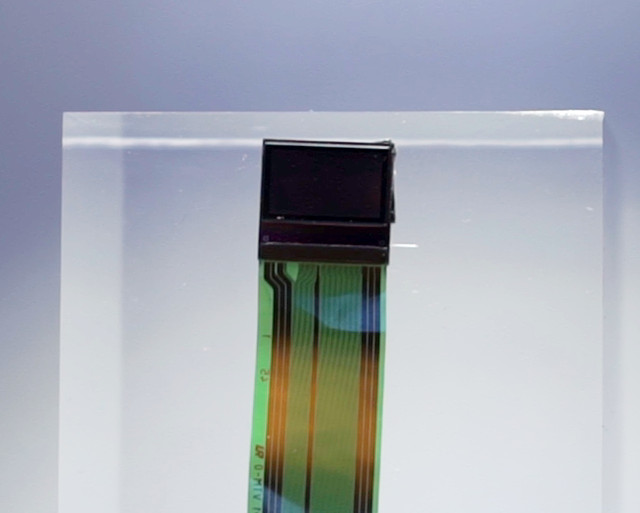It has been several years since we saw the first Moverio headset from Epson – a look through our archives shows that the product was first revealed in November 2011. The Moverio is an augmented reality wearable using an LCD pico projector – at least, it was until now.
For the third generation (Moverio BT-300), Epson has replaced the LCD projector with a silicon-OLED projection system. This means that the headset is about 20% lighter (it weighs 60g) and smaller, because there is no need to include a separate light source: OLED is self-emitting. The driver IC has also been integrated, further slimming the unit.
The 0.43″ WOLED display (with RGB colour filters) has 1280 x 720 resolution. Using an OLED display has also raised the contrast and colour gamut of the Moverio, said Epson. The company told us that the OLED uses resonant cavities above each RGB pixel to improve the quality of light and that the OLED was developed in house. Although the headset will (still!) not fit properly for people using glasses, the images we saw were very sharp and showed up clearly.
Field of view is 23°, and we were told that the wearer will perceive an 80″ image at 5m, or a 320″ image at 20m. The headset runs on an Intel Atom CPU and features a 5MP front camera.
Epson is leaning away from the consumer market with the BT-300, and believes that B2B and verticals are more relevant applications for augmented reality. The company will launch the headset in Q4.
 Epson’s Microoled Image:Meko
Epson’s Microoled Image:Meko

